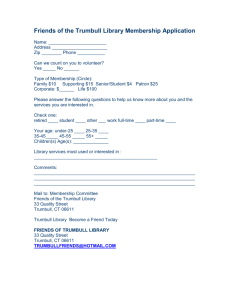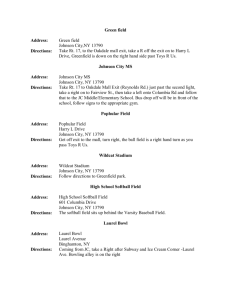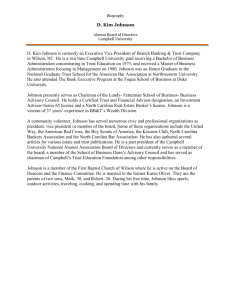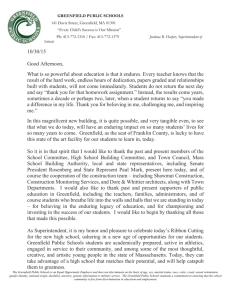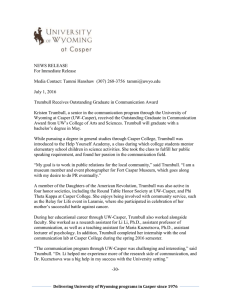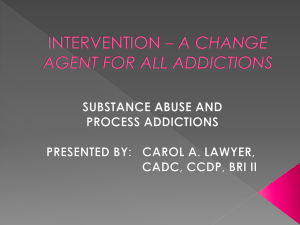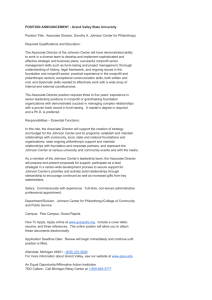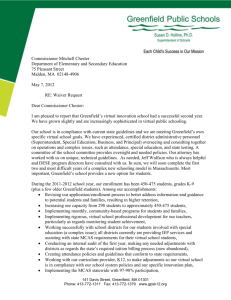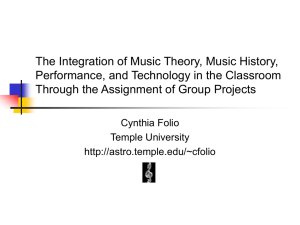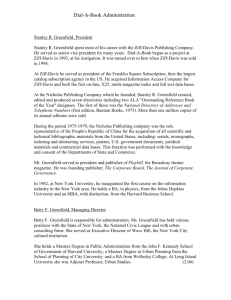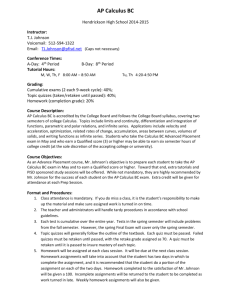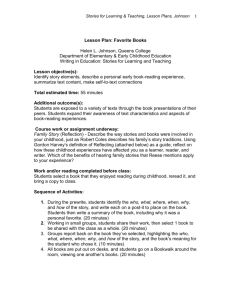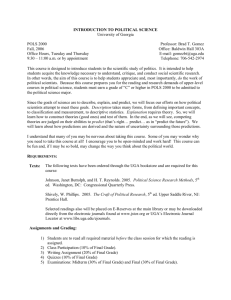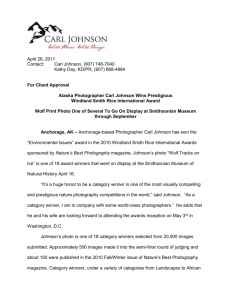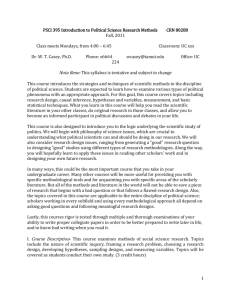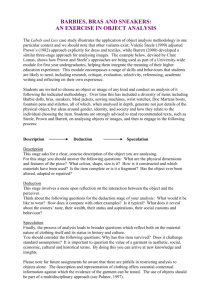References (Sharon Ritchie)
advertisement
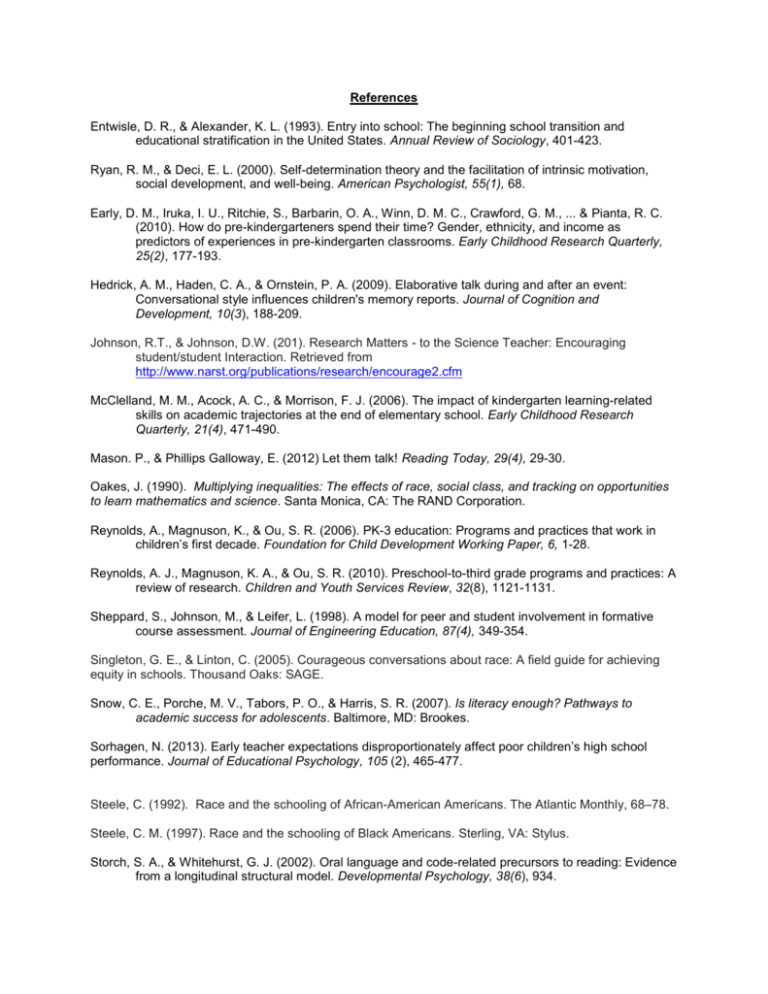
References Entwisle, D. R., & Alexander, K. L. (1993). Entry into school: The beginning school transition and educational stratification in the United States. Annual Review of Sociology, 401-423. Ryan, R. M., & Deci, E. L. (2000). Self-determination theory and the facilitation of intrinsic motivation, social development, and well-being. American Psychologist, 55(1), 68. Early, D. M., Iruka, I. U., Ritchie, S., Barbarin, O. A., Winn, D. M. C., Crawford, G. M., ... & Pianta, R. C. (2010). How do pre-kindergarteners spend their time? Gender, ethnicity, and income as predictors of experiences in pre-kindergarten classrooms. Early Childhood Research Quarterly, 25(2), 177-193. Hedrick, A. M., Haden, C. A., & Ornstein, P. A. (2009). Elaborative talk during and after an event: Conversational style influences children's memory reports. Journal of Cognition and Development, 10(3), 188-209. Johnson, R.T., & Johnson, D.W. (201). Research Matters - to the Science Teacher: Encouraging student/student Interaction. Retrieved from http://www.narst.org/publications/research/encourage2.cfm McClelland, M. M., Acock, A. C., & Morrison, F. J. (2006). The impact of kindergarten learning-related skills on academic trajectories at the end of elementary school. Early Childhood Research Quarterly, 21(4), 471-490. Mason. P., & Phillips Galloway, E. (2012) Let them talk! Reading Today, 29(4), 29-30. Oakes, J. (1990). Multiplying inequalities: The effects of race, social class, and tracking on opportunities to learn mathematics and science. Santa Monica, CA: The RAND Corporation. Reynolds, A., Magnuson, K., & Ou, S. R. (2006). PK-3 education: Programs and practices that work in children’s first decade. Foundation for Child Development Working Paper, 6, 1-28. Reynolds, A. J., Magnuson, K. A., & Ou, S. R. (2010). Preschool-to-third grade programs and practices: A review of research. Children and Youth Services Review, 32(8), 1121-1131. Sheppard, S., Johnson, M., & Leifer, L. (1998). A model for peer and student involvement in formative course assessment. Journal of Engineering Education, 87(4), 349-354. Singleton, G. E., & Linton, C. (2005). Courageous conversations about race: A field guide for achieving equity in schools. Thousand Oaks: SAGE. Snow, C. E., Porche, M. V., Tabors, P. O., & Harris, S. R. (2007). Is literacy enough? Pathways to academic success for adolescents. Baltimore, MD: Brookes. Sorhagen, N. (2013). Early teacher expectations disproportionately affect poor children’s high school performance. Journal of Educational Psychology, 105 (2), 465-477. Steele, C. (1992). Race and the schooling of African-American Americans. The Atlantic Monthly, 68–78. Steele, C. M. (1997). Race and the schooling of Black Americans. Sterling, VA: Stylus. Storch, S. A., & Whitehurst, G. J. (2002). Oral language and code-related precursors to reading: Evidence from a longitudinal structural model. Developmental Psychology, 38(6), 934. Tough, P. (2014) Who Gets to Graduate? NY Times Magazine (May, 2014) Trumbull, E., Rothstein-Fisch, C., & Greenfield, P. M. (2000). Bridging cultures in our schools: New approaches that work (pp. 1-16). San Francisco: WestEd. Trumbull, E., Rothstein-Fisch, C., Greenfield, P. M., & Quiroz, B. (2001). Bridging cultures between home and school: A guide for teachers. Mahwah, NJ: Routledge. Valeski, T. N., & Stipek, D. J. (2001). Young children's feelings about school. Child development, 72(4), 1198-1213. Werner, E. E. (2013). What can we learn about resilience from large-scale longitudinal studies?. In S. Goldstein & R. B. Brooks (Eds.), Handbook of resilience in children (pp. 87-102. New York: Springer. Wildhagen, T. (2012). How teachers and schools contribute to racial differences in the realization of academic potential. Teachers College Record, 114(7), 2012, 1-27. Zull, J. E. (2002). The art of changing the brain: Enriching teaching by exploring the biology of learning.
